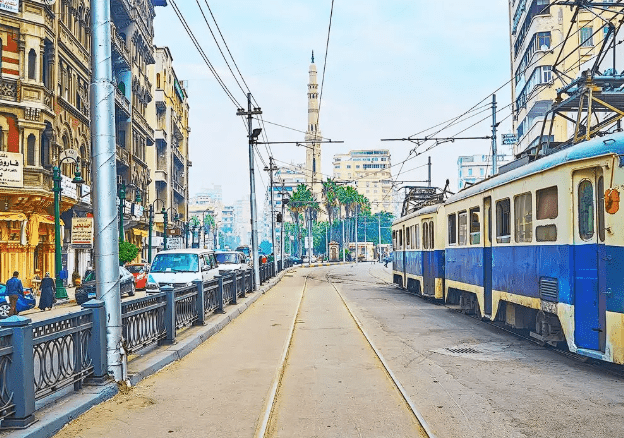For more than a century, the Raml Tram has threaded through the heart of Alexandria as a living link between past and present. Today, Egypt is investing in a major rehabilitation of this historic line; not just to upgrade infrastructure, but to preserve a key part of the city’s identity.
Historical context
The tram network in Alexandria dates back to the 1860s. The Raml line in particular has played an important role in the city’s urban fabric. The challenge, however, is that decades of under-investment had left it slow, low-capacity, and increasingly misaligned with 21st-century urban mobility needs.
But the tram is more than transport: it is part of Alexandria’s heritage. a symbol of the city’s maritime era, colonial period, local culture, and daily life for many residents. Renewing it, therefore, becomes more than an engineering project; it becomes a statement of continuity and urban identity.

The Modernization Project
The modernization project spans approximately 13.2 km, running westward from Victoria Station through key neighborhoods including San Stefano, Sidi Gaber, and El Raml. It will feature 24 stations, with the route comprising roughly 5.7 km at surface level, 7.3 km elevated, and 276 meters underground.
Designed to improve urban mobility, the project aims to more than double average operating speed to 21 km/h, cut journey times from 60 to 35 minutes, reduce headways from 9 to 3 minutes, and triple passenger capacity from 4.7k to 13.8k per hour per direction.
The upgrade is now set to be completed in 2027.
A Closer Look

The line spans from Victoria Station through key Alexandrian zones: San Stefano, Janaklees, Al Wizara, Rushdi, Mustafa Kamel, Sidi Gaber, Sporting, Ibrahimia, and El Raml. The route covers important urban nodes and is positioned to link with the future metro at Victoria and Sidi Gaber.
The key institutions involved include the National Authority for Tunnels, the implementing companies (Hassan Allam & The Arab Contractors), designers (SYSTRA & partners), funders (EIB), and local communities.
Conclusion
The modernization of the Raml Tram represents a strategic investment in Alexandria’s urban future, one that goes beyond infrastructure upgrades. Reviving this century-old transport line reinforces the city’s identity, improves daily mobility for residents, and enhances the visitor experience by blending historic character with modern functionality.
The long-term impact will depend on whether the upgraded system delivers on its goals: faster travel times, increased passenger capacity, improved service quality, and a meaningful connection to Alexandria’s heritage. Success would position the Raml Tram as both a functional transit corridor and a symbol of urban continuity.



